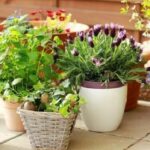Although most of these plants are only toxic if there is direct contact, it is advisable not to risk it, especially if there are small children or pets that can ingest or touch them.
Have you ever wondered which indoor plants could be dangerous? In that case, read on to learn about them and why it’s important to avoid them as much as possible.

Indoor plants are a very common decorative element in homes. They add a touch of color and maximize the feeling of well-being. Above all, because they help purify the air and give us a certain ‘fresh breath of nature’ even inside the house.
Generally, we believe that all plants are valid for any environment and that it is not necessary to delve much into the subject when choosing one species or another in the store. However, you do have to take into account some issues.
There are some indoor plants that could be dangerous. Below we will explain what they are and why we should keep them away, especially from children and pets. Also, we will show you some plants that you can have at home without problem.
5 indoor plants that could be dangerous.
The plants listed below are dangerous when there are children or pets in the house. In fact, ingesting them pose health risks. However, some of them are also dangerous to smell or touch.
In this way, they could cause damage and poisoning to people or animals. For this reason, we recommend not having them indoors. On the contrary, we recommend opting for others that help us purify the air.
1. Dracunculus vulgaris (Dragontea).
The dragontea or Dracunculus vulgaris is typical of Mediterranean countries and is also part of the list of indoor plants that could be dangerous because it is poisonous.
In addition, its danger is considerable because its curious appearance and its orange-red berries attract a lot of attention and can invite handling.
Although it may look very pretty, it is not convenient to include it in the home. Instead, you could opt for some pretty purple coves, for example.
2. Philodendron (Philodendron spp).
Although the motif of the philodendron leaf became fashionable for being very striking, this does not mean that this is one of the most recommended indoor plants.
If there are children and pets in the home, it is best to avoid it, since if they eat it they can suffer from poisoning.
In that case, its calcium oxalate content can cause burning of the mouth and lips, stomach pain and throat irritation. Finally, in the worst case, seizures, loss of consciousness and death.
It should be noted that there are also cases that have not been fatal, but in which the affected person has suffered chronic kidney or liver failure as a consequence.
3. Hydrangea.
Hydrangea is a well-known beautiful flower native to Japan. There are over a hundred species and it can be grown indoors or outdoors.
However, you have to be careful because both the flower and the leaves contain hydragerin. This is a compound that has caused intoxication in people and animals with symptoms similar to those of ingesting cyanide.
Its roots may have medicinal properties, but its use is not recommended due to the dangers it entails.
4. Salvia divinorum.
We highlight the full name of this plant because we do not want to confuse it with the Salvia officinalis of common use and consumption. This plant with large green leaves, native to Mexico, contains salvinorin. This is a compound with very strong hallucinogenic and onyrogenic effects.
The Salvia divinorum is one of the houseplants that could be dangerous because it produces significant alterations of consciousness that can lead to psychotic states, with permanent sequelae.
5. Belladonna (Atropa belladonna).
Belladonna is, in short, one of the indoor plants that could be dangerous. It is not recommended to have this plant inside the home, due to the high degree of toxicity of its alkaloids, even due to handling.
Its purple bell-shaped flowers are very striking, so there are those who have tried to include it in their home as a decorative element, along with other indoor plants.
However, it must be borne in mind that it is not the best option: its black fruits have an unpleasant smell, and were formerly used as a poison.
Harmless houseplants.
If you want to have indoor plants at home that are beautiful, safe and also help you purify the air, consider the following options that we are going to discuss.
1. Epipremnum aureum.
Commonly known as poto, potus, or ecindapso, it does not require much care and is ideal for removing formaldehyde and other volatile organic compounds from the air.
2. Chrysalidocarpus lutescens.
Also called ‘areca’ or ‘bamboo palm’, it cleans the air during the day and filters formaldehyde and other substances that release paint from walls, furniture or other varnished products. Therefore, it is considered one of the most recommended indoor plants.
3. Sanseviera trifasciata.
It is also known under the names of ‘ sanseviera ‘, ‘tiger’s tail’, ‘mother-in-law’s tongue’, ‘tiger’s tongue’ or ‘sword of Saint George’.
It is said to be especially useful as a houseplant because it transforms carbon dioxide into oxygen overnight. In fact, it is said that it is ideal to put it in the bedroom of the house.
Indoor plants must be chosen well.
It is recommended that you decorate your environments with indoor plants that are not only beautiful, but can also adapt well to the environment where you are going to place them, are easy to care for and purify the environment.
It does not hurt that you inform yourself a little and take some precautions not to place dangerous indoor plants at home. In case of doubt or intoxication, we recommend that you go to the doctor as soon as possible.
For information, you can also turn to a gardening expert or a horticulturist.


